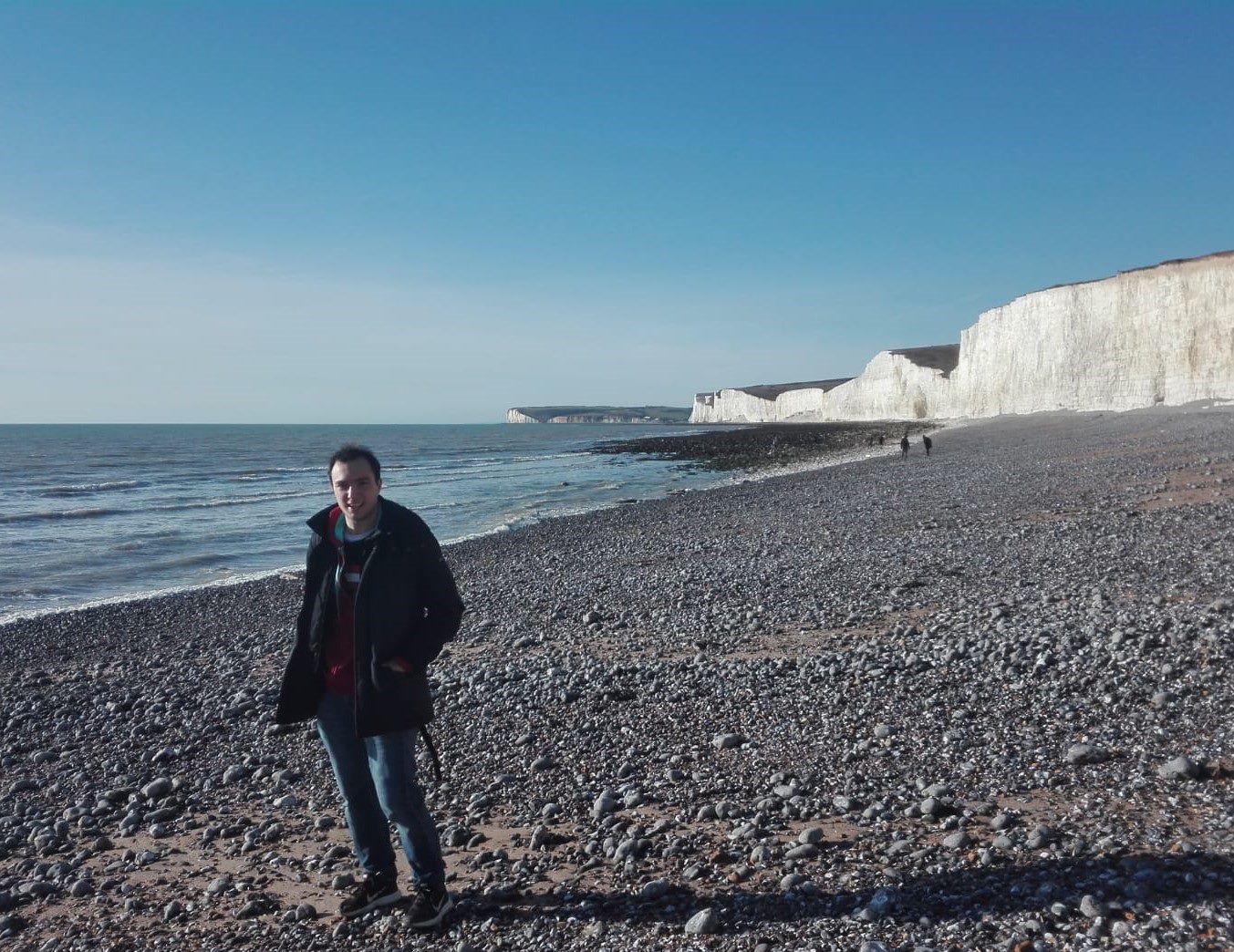Hello everybody! I am Enrico Aymerich, a student at the University of Cagliari, currently attending my Master of Science in Electronic Engineering. During my master, I’ve had the unique opportunity to do an internship at the Culham Science Centre, which hosts JET, the world’s largest tokamak. The JET tokamak has a pivotal role in the design of the ITER experiments, not only because it is the largest tokamak in size, but because it tests some ITER components, such as the metallic wall (ITER-like wall) and it is the first tokamak which tested deuterium-tritium reactions.
My work focused on the analysis of the Mirnov coils signals and is aimed at detecting the unstable behaviour of a tokamak plasma during an experiment through MHD plasma modes information. This is very important for the ITER experiment: because of its large size, there is a very stringent limit on the number of disruptions (in particular because of Vertical Displacement Events, or VDEs) which will be permitted during the experiments, especially during D-T reactions.
During my internship
During my internship, I developed and optimized two algorithms for the identification of MHD modes in the plasma. The first approach is based on the SVD (Singular Values Decomposition); given a matrix built from many signals, this technique decomposes it into three matrixes: one embeds the temporal frequency of the signals, one their magnitude and one their spatial frequency. This allows to isolate the temporal and spatial frequency of the MHD modes and to identify them through their spatial periodicity. The second method is based on coherence spectrum analysis and considers the power spectra of two channels to verify if two signals are well-correlated at a specific frequency. A high coherence indicates the presence of a mode propagating in the plasma; the phase difference between the channels can be computed to determine the spatial frequency of the perturbation, thus identifying the periodicity of the MHD instability. The results of this work will be the starting point for my thesis work on the automatic prediction and classifications of disruptions in tokamaks, which is still a very important open problem in fusion research.
Living in Oxford
 I stayed in one of the most known and historical student cities: Oxford hosts one of the most ancient and prestigious universities in the world, with plenty of events and opportunities for students. During my stay, I have visited some of the university's renowned colleges and attended events such as conferences and parties. Moreover, Oxford is well connected with other cities in the UK: during my stay, I visited the famous Seven Sisters cliffs near Brighton, where I went with a group of friends and enjoyed a sunny day of February!
I stayed in one of the most known and historical student cities: Oxford hosts one of the most ancient and prestigious universities in the world, with plenty of events and opportunities for students. During my stay, I have visited some of the university's renowned colleges and attended events such as conferences and parties. Moreover, Oxford is well connected with other cities in the UK: during my stay, I visited the famous Seven Sisters cliffs near Brighton, where I went with a group of friends and enjoyed a sunny day of February!
Acknowledgements
I would like to thank the people at the Culham Science Centre, and in particular the group of PhD students of the CCFE Centre of Doctoral Training, for welcoming me in the students’ group: I attended many student meetings in Culham, and I also presented my work in the last student meeting of 2018! I then would like to thank my thesis advisors, Prof. Alessandra Fanni and Dr Alessandro Pau, Dr Andrea Murari who supervised me during my internship, and last but not least, Fusenet for making this internship possible.
- Enrico Aymerich
